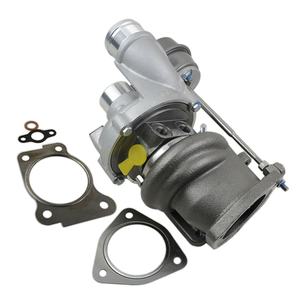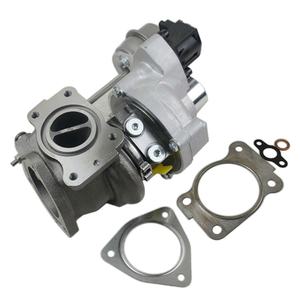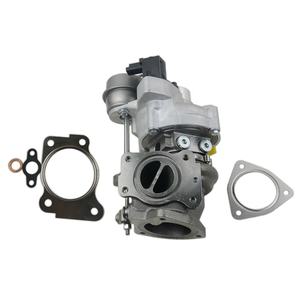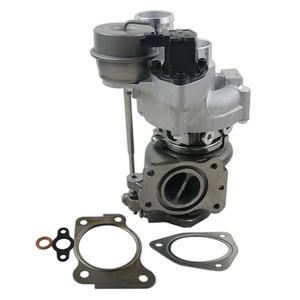(16455 products available)









































































































































































































Cooper engines are made in different types to fit various needs. Understanding these types helps businesses know what to choose for their work needs. The following table shows the main types of Cooper engines:
Details:
Cooper four-stroke engine:Most engines use this power method. They change fuel into power in four steps or strokes: intake, compress, explode, and release. Four-stroke engines usually have a high fuel use.
Details:
Takes half the time than four-stroke engines to make a power stroke. Their design lets two strokes do the work of one. They have a lighter build but a more fuel use than four-stroke engines.Details:
Have two rows of cylinders that form a V shape. Common in big trucks and strength vehicles. They offer a strong power source.Details:The easiest way to build an engine. All cylinders sit in a straight line. Inline engines usually offer good fuel use and easy maintenance needs.
Note: Some basics use differences of four-stroke and two-stroke ways to create power outside of V-type and inline engine forms.
Cooper engine specs indicate their immense power and capacity, designed for heavy-duty tasks. They generally feature robust V8 or V10 configurations, frequently with turbo or twin-turbocharging. Engine displacements usually range between 6.0 to over 10 liters. Horsepower can be quite high, often peaking at around 300 to 500 hp, with torque figures even more impressive, averaging between 1,200 to over 2,000 Nm.
The engines generally use diesel fuel, incorporating advanced technologies like Common Rail Direct Injection (CRDI) for a more efficient and powerful draw. COOPER's engines also emphasize environmentally responsible designs; many comply with Euro 5/6 emission standards, incorporating selective catalysis and other methods to limit harmful emissions.
Since a well-maintained engine is crucial for optimal vehicle performance, Cooper engine maintenance is very important. Regular inspections are a big part of engine care. Operators should frequently examine components for signs of wear, damage, or any leaks. Additionally, developing a scheduled servicing routine according to the manufacturer's guidelines is essential. This may include replacing critical parts like the turbocharger, fuel pump, and injectors at specific intervals. Keeping the engine parts clean should be a priority as well. Regularly eliminate any accumulated dirt or deposits, especially from the radiators and cooling fans, to avoid overheating. Another important maintenance procedure is to ensure timely fluid changes. Not just motor oil but also the coolant and any identified specific lubricants for particular parts should be replaced promptly to ensure smooth operation.
Cooper engines are specifically designed to provide power to vehicles. They are commonly used in the following scenarios:
Passenger vehicles
Cooper engines are primarily used in cars, which are typically smaller vehicles designed to transport one or more individuals on public and private roadways. In some parts of the world where public transportation is not easily accessible, cars serve as the principal means of transportation.
Commercial vehicles
Cooper engines are utilized in larger vehicles, such as trucks and vans, that are manufactured to transport goods and services. Such vehicles typically have to be more potent and have longer endurance than standard passenger vehicles. Additionally, some commercial vehicles are equipped with engines designed for ease of use and maintenance, including those that run on natural gas.
Off-road vehicles
Cooper engines are utilized in vehicles not designed to operate on traditional road surfaces, such as those used in agricultural or construction equipment. These may include tractors, harvesters, bulldozers, or excavators, which require robust and durable engines to handle harsh working conditions and provide high-power output.
Public transport
Cooper engines may be used in buses and coaches that transport groups of people, usually according to defined routes or schedules. Such vehicles are typically more prominent than conventional cars and are designed to accommodate more passengers. Additionally, cooper engines could be incorporated into taxis, which are cars for hire to transport individuals or small groups of people from one place to another, usually according to a metered fare based on distance traveled.
Special-purpose vehicles
Cooper engines are utilized in vehicles with specific functions, such as ambulances that transport sick or injured individuals to medical facilities or fire trucks used by firefighters to respond to emergencies and fight fires. These vehicles typically require reliable engines that can provide the necessary power and performance in critical situations.
When buying new Copper engine parts, clients should first look at the quality of the materials. Suppliers will use various grades of Copper, Alloy, or Brass for their products. Clients who buy durable and reliable Copper engine parts will get great resale value.
Next, buyers should assess the working condition of the Copper engine parts. Products like Turbochargers and Cylinders should be fully functional with no signs of wear. They can achieve this by requesting inspection reports or engine part histories from the suppliers.
Buying engine parts that fit specific models will also ensure compatibility. Therefore, buyers should get the engine parts' model numbers and specifications and confirm them with the manufacturers before placing a bulk order.
Apart from Copper, several other alloys and metals are used to make engine parts. Buyers should take some time to learn about other possible alternatives to Copper and their benefits. Using alternative materials can help buyers negotiate better prices with their suppliers and offer clients more options. For example, Aluminum Engine parts like Pistons, Cylinder Heads, and Engine Blocks are lightweight and budget-friendly.
Buyers should also consider reputable suppliers who put their Copper engine parts through rigorous quality control standards. A good supplier will provide warranties for their products. In this case, a warranty for an engine part means coverage against manufacturing faults.
Q1: How to improve the performance of the Cooper engine?
A1: Users can enhance the performance of the Cooper engine by regularly servicing it, installing a quality air intake system, using high-quality fuel, remapping the engine's ECU, and maintaining proper tire pressure.
Q2: What are the signs of a failing Cooper engine?
A2: Some signs indicating a failing Cooper engine include strange engine noises, poor performance, increased fuel consumption, engine overheating, and engine warning light.
Q3: How long does a Cooper engine last?
A3: If well maintained, a cooper engine can last up to 200,000 kilometers or more, depending on various factors like driving habits, maintenance, and engine quality.
Q4: Are Cooper engines good?
A4: The quality of an engine significantly influences a vehicle's overall performance. Cooper engines are generally regarded as reliable and durable when properly maintained. Their design incorporates advanced technology to enhance fuel efficiency and power output.